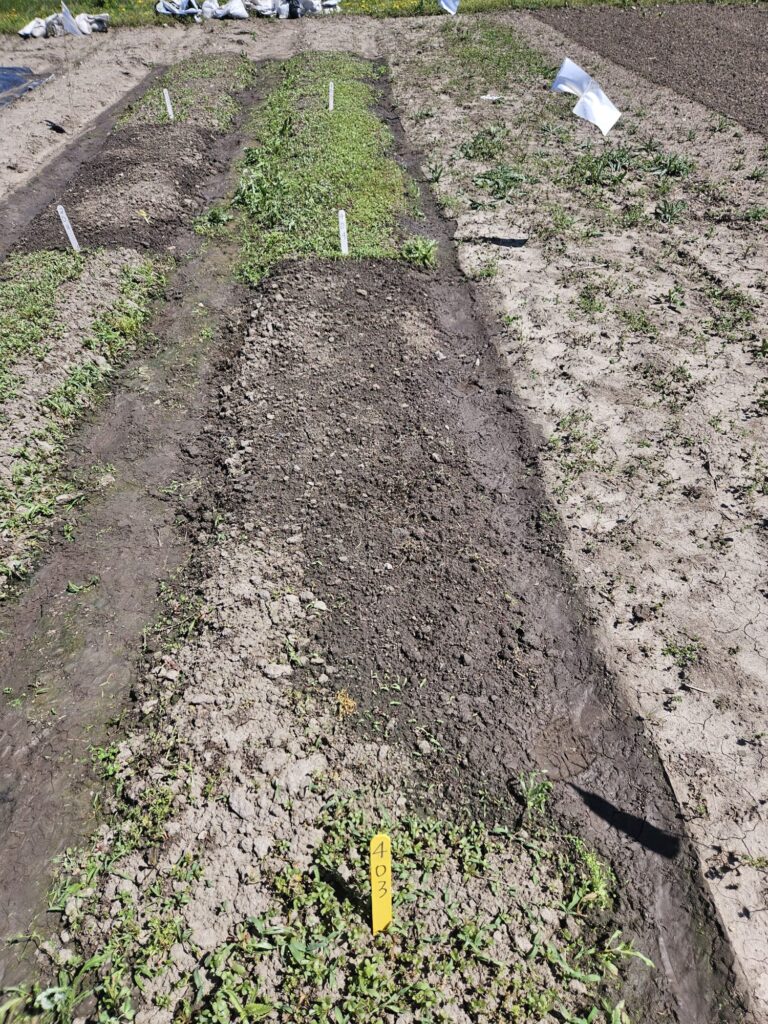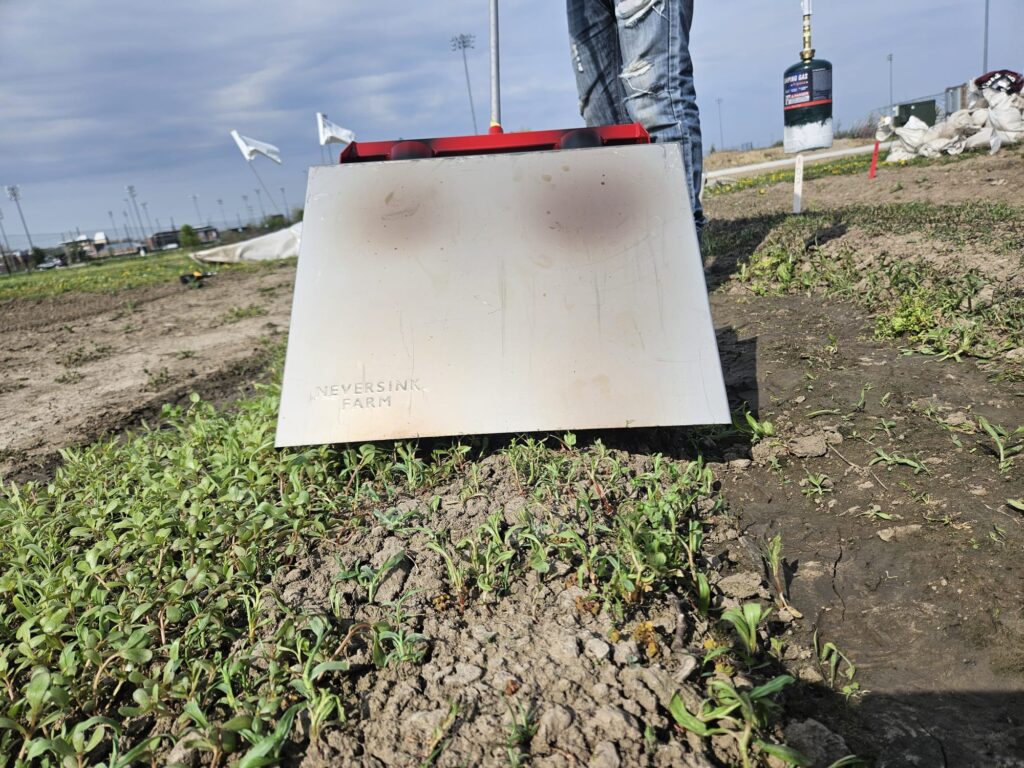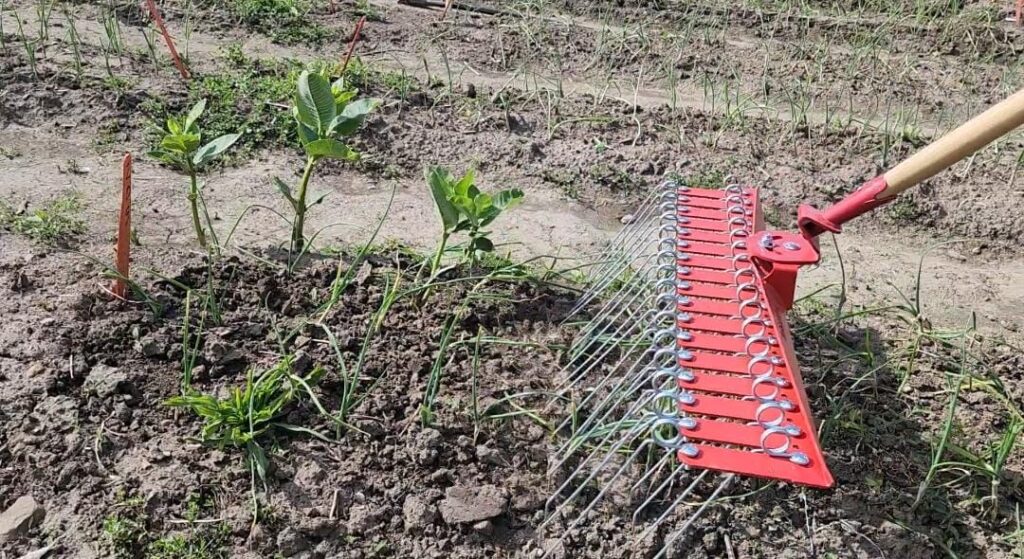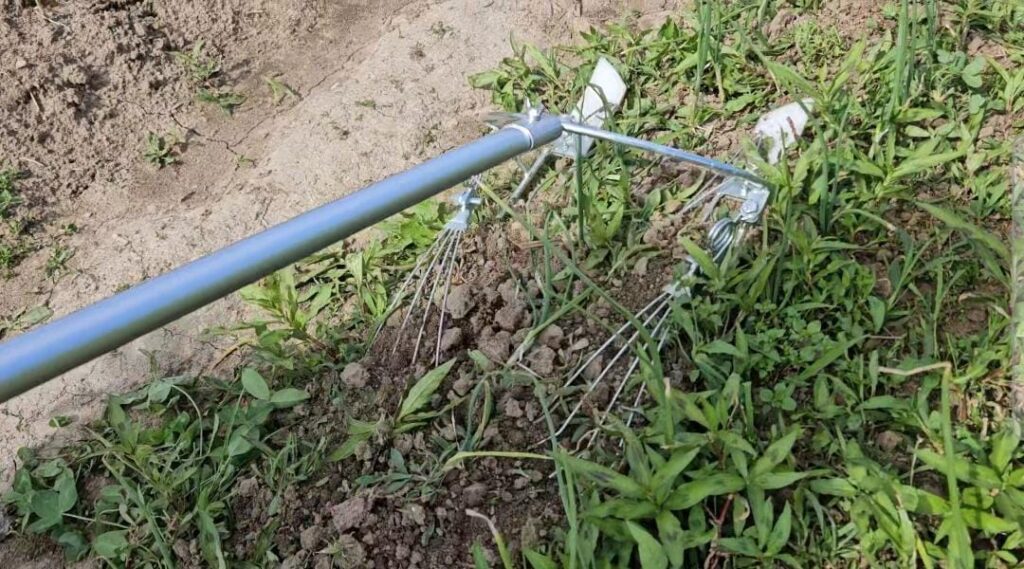Weeds are one of the most persistent and costly challenges in agriculture. Yield losses due to weeds can be severe, and weed management options are often limited, especially for organic and small-scale specialty crop growers. While many small-scale producers rely on hand-weeding or tillage, there are alternative tools that can improve weed control and reduce labor when used correctly and at the right time.
This publication highlights several simple yet effective weed management tools available to growers, including silage tarping, flame-weeding, organic herbicides, and handheld cultivation tools. These strategies can be integrated into existing production systems and tailored to different crop schedules and field conditions.
Pre-plant Tools
Silage Tarps
Silage tarps are placed over moist soil for 2–4 weeks before planting. The absence of light and buildup of heat under the tarp kill emerged vegetation, including weeds or cover crops. This method is particularly useful for stale seedbed preparation, early-season weed suppression, and when flipping beds between succession crops. It’s inexpensive, chemical-free, and works well in high-residue systems.

Figure 1. Soil surface after removing silage tarp, showing a clean, moist, weed-free bed. In contrast, the green areas show where only clear plastic was used (Photo by Celia Corado).
Flame-weeders
Flame-weeders apply direct heat to weeds using propane burners. This method is especially effective for small, broadleaf weeds and is often used before crop emergence (e.g. in carrots or onions). A key advantage is its ability to manage weeds without disturbing the soil. Flame-weeding is most effective on calm, dry days and requires training to use safely.

Figure 2. Propane-powered flame weeder targeting weeds in a prepared bed prior to planting (Photo by Celia Corado).
Organic Herbicides
Organic herbicides, such as those containing caprylic/capric acids, clove oil, or pelargonic acid, can provide contact weed control. These products are most effective on small, emerged weeds and generally do not have residual activity. While often more costly per acre than synthetic herbicides, they can be part of an integrated organic weed management plan. It is worth noting that not all organic herbicides are OMRI-approved. Consult with your organic certifier before applying organic herbicides on your farm.
Post-plant Tools
Tine Harrow
The tine harrow (Figure 3) is a lightweight tool with flexible metal tines that disturb the top layer of soil. It can be used after crop emergence, ideally when weeds are at the white-thread stage. This tool works well in dense plantings and is fast to operate, making it suitable for time-sensitive weeding tasks. Its success depends on soil conditions such as moisture, compaction, and crusting. While not effective on mature weeds, tine harrowing can loosen the soil, making subsequent hand-weeding easier.

Figure 3. Tine harrow designed for small-scale farming, effective for early post-emergent weed control (Photo by Jeanine Arana).
“Magic” Cultivator
The Magic Cultivator (also called the Q‑Hoe) is a manual in‑row weeding tool equipped with two sharpened blades that cut weed seedlings just below the soil surface. Originally popularized through Japanese small-scale vegetable production, the Purdue Student Farm has used it in close-spaced crops, including onions. The tool allows precise cultivation without damaging crop roots, significantly reducing hand-weeding time when used at the correct early stage. Its effectiveness is less impacted by soil compaction compared to tine harrows, and it excels in loosening soil within the crop row, making follow-up weeding quicker and more efficient.

Figure 4. Magic Weeder in action, gently disturbing the soil around onions to dislodge in-row weeds (Photo by Celia Corado).
Conclusion: Try It on Your Farm
While no single tool or method offers a complete solution, integrating a variety of approaches can reduce reliance on chemicals, cut labor costs, and support long-term soil health. Many of these tools, as well as others not covered in this article, are cost-effective, easy to use, and can be modified for different scales and cropping systems.
Interested in trying these tools?
The Horticulture Crops Weed Science Lab at Purdue University is recruiting farmers to collaborate on a North Central Region SARE-funded project exploring these weed management techniques. Participating growers may have the opportunity to receive support in sourcing tools and technical guidance.
A flyer with more information is available below. You can also visit this link if you would like to participate: https://purdue.ca1.qualtrics.com/jfe/form/SV_5tGympif5J6m02G. For questions or to express interest, please contact your local Extension educator or visit Purdue Extension online.
Additional reading
- Bai, L., Li, Z., Wang, L., Wu, L., Zhou, X., Huang, Q., & Peng, Q. (2017). Botanical herbicide containing caprylic acid as well as preparation method and application thereof (Patent No. CN106417295A). China National Intellectual Property Administration. https://patents.google.com/patent/CN106417295A/en
- Johnson, W. C., & Davis, J. W. (2014). Pelargonic Acid for Weed Control in Organic Vidalia® Sweet Onion Production. Horttechnology, 24(6), 696–701. https://doi.org/10.21273/HORTTECH.24.6.696
- Mutch, D. R., Thalman, S. A., Martin, T. E., & Baas, D. G. (2008). Flaming as a Method of Weed Control in Organic Farming Systems; Extension Bulletin E-3038. https://www.canr.msu.edu/uploads/resources/pdfs/flaming_as_a_method_of_weed_control_in_organic_farming_systems_(e3038).pdf
- Rylander, H., Rangarajan, A., Maher, R. M., Hutton, M. G., Rowley, N. W., McGrath, M. T., & Sexton, Z. F. (2020). Black Plastic Tarps Advance Organic Reduced Tillage I: Impact on Soils, Weed Seed Survival, and Crop Residue. Hortscience, 55(6), 819–825. https://doi.org/10.21273/HORTSCI14792-19
